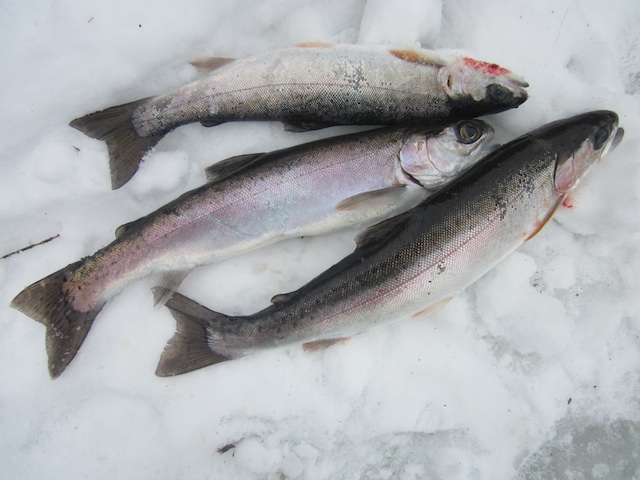Our neighbor Joe Trotta invited my family to go ice fishing. We met at McConnell Lake, about fifteen minutes drive from our home. The girls got to ride on a skidoo, towing a sled with our gear, out to the ice fishing holes. I have never ice fished in my life, nor caught a fish. Today was my lucky day. I caught two trout. It seems wondrous that closing in on my fifth decade I can still find delightful new experiences.
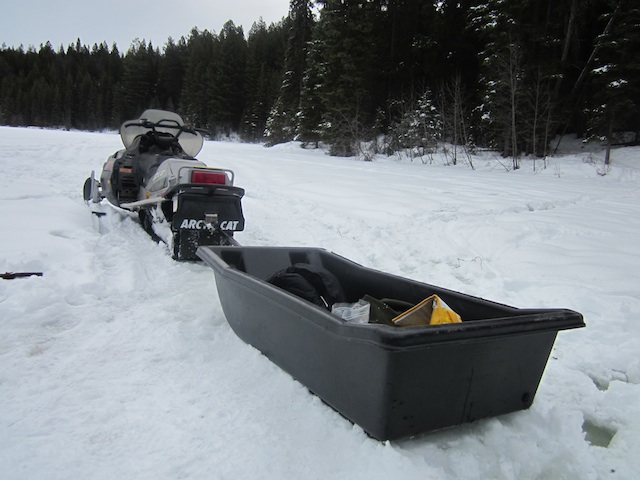
The girls got to ride on a skidoo to the ice fishing holes on the far end of the lake. The skidoo towed a sled with our gear.
The equipment needed for ice fishing is extremely basic. A skidoo isn’t necessary. Shaen and I walked across the lake in about ten minutes while the girls got to enjoy the novelty of a skidoo. It’s easier to walk on the skidoo tracks. During the melt, the ice is safe to walk on but the snow on top of the ice melts. You can get a boot full of cold water if you go off the skidoo tracks. I know because I went off the tracks and got a boot full of cold water! I will bring a spare pair of wool socks next time. Walking across the lake got us thinking that it would be nice to cross-country ski or snow-shoe across the lake too. We could easily pull our fishing gear with a small sled.

Here is the equipment for making a hole in the ice and scooping out the ice pieces from the hole. On the right is the ice fishing gear. Simplicity itself.
It took me about ten minutes to cut a hole in the ice and scoop out the pieces of ice. I was out of breath by the end. Some people use manual or powered ice drills but Joe has made a simple cutting tool with a heavy solid bar with a very sharp blade on the tip. The top of the bar has a rope that loops around your arm to avoid losing the cutting pole by accident when you break through the ice. Once the hole is cut, it is easy to re-open the hole if you come back within a few days.
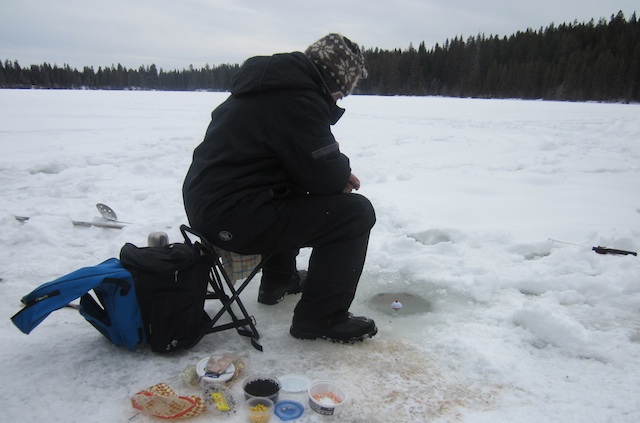
Joe has been ice fishing for years. He has a small seat and bag for all his gear. He uses live worms and frozen corn for bait. He sometimes uses shrimp to “chum” the trout.
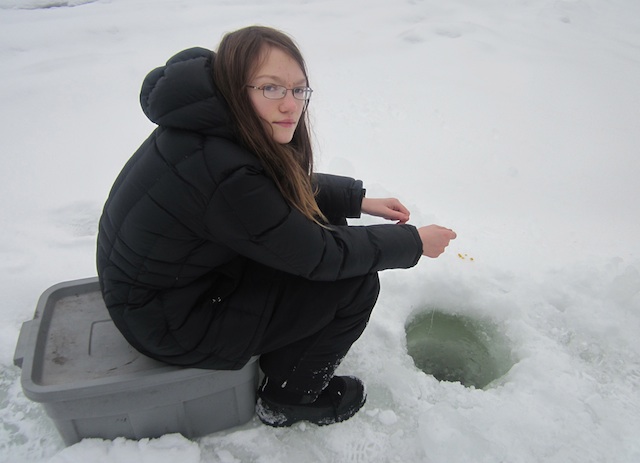
Sonja is using a plastic bin for a seat. We use this bin to carry our rocket stove and a supply of fire wood and starter. She has a few pieces of corn which she uses to “chum” the trout.
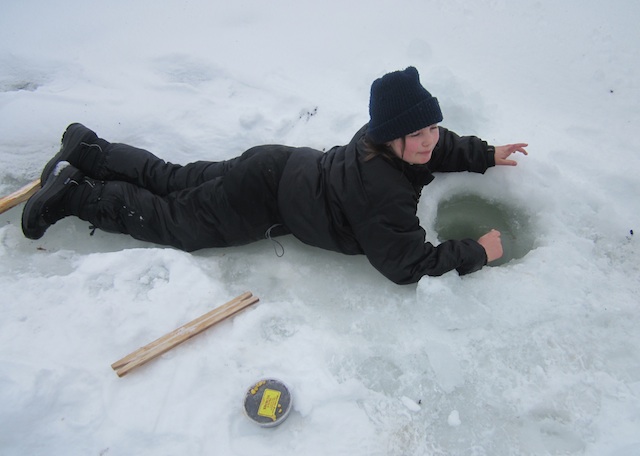
Joe showed us how to look through the icy water to see the fish below. You get your head right into the hole and shelter your head so your eyes can adjust to the darkness of the water. Erika got a face full of cold water!
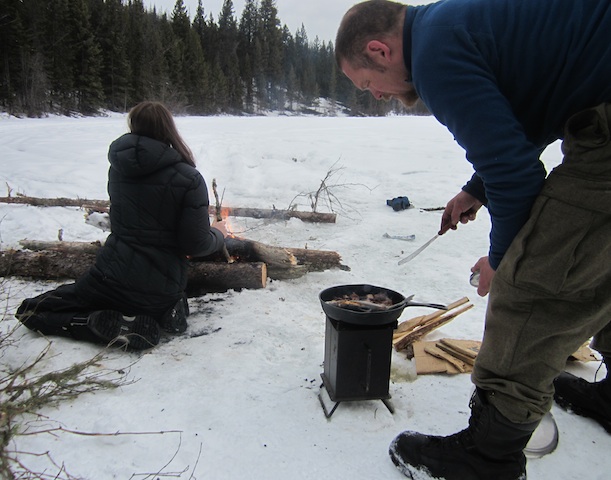
Shaen is cooking a trout and warming up breakfast on our rocket stove. Erika and I collected deadfall trees from the forest while Sonja helped maintain a fire to keep warm.
I have to say, I really loved being out there, even with a cold, wet foot. The lake was so quiet and still. Erika and I enjoyed dragging out the deadfall trees onto the lake to make a warming fire. When Sonja wasn’t fishing, she whittled sticks and tended the fire. We enjoyed a late breakfast of fresh trout cooked over our rocket stove. If that wasn’t enough, we came home with enough trout for dinner.
I have recently learned how to enjoy eating fish heads. Fish heads are very nourishing. I also keep the trout liver and any trout roe I might find and eat it raw. I know that might sound gross, but after all the reading I have done about nourishing traditional foods, I have taken to eating the so-called “waste parts” of the fish. It was hard at first. I had to get over my cultural training but now I enjoy eating the fish heads and raw roe. If you are wondering why I would want to learn how to enjoy these foods please see:
Ancient Dietary Wisdom for Tomorrow’s Children
Sacred Foods for Exceptionally Healthy Babies …and Parents, Too!

